The Trademark Trial and Appeal Board, or TTAB for short, is the administrative body that adjudicates trademark matters at the U.S. Trademark Office. Among other things, its authority includes deciding opposition proceedings brought by third parties against a mark that has been published for opposition prior to registration.
Opposition practice is quite active at the USPTO, as third parties recognize the importance of blocking another’s registration from issuing for a myriad of reasons and many applicants value having a registered mark and thus defend the challenge to registrability. While a decision on whether a mark should issue to registration rests with the TTAB if the application is opposed, it should be noted that the TTAB has no authority to stop the actual use of the challenged mark in commerce. Nevertheless, the TTAB’s authority in opposition proceedings is significant, as it decides if one’s mark should register or not. Each case is decided by a panel of three administrative trademark judges, and the opinion is written by one of the three. When one reviews one or more TTAB decisions in opposed matters, one realizes the time and effort and expense that parties to those proceeding go to in order to stop a registration from issuing or to issue one. And while the effort is arguably sometimes short-sighted because use in commerce is not adjudicated, others rest and fall on having or precluding another from having a federal registration.
With that in mind, the TTAB recently issued two noteworthy decisions that this article will summarize, both of which relate to the deference accorded to “famous” marks:
Red Bull GmbH v. Morganti Flavia Innovaciones Gastronomicas, S.L.
In the matter, the applicant sought to register the mark  in Class 32 for goods including beers, mineral and aerated waters, soft drinks, smoothies, etc. The application claims the color shown in the mark.
in Class 32 for goods including beers, mineral and aerated waters, soft drinks, smoothies, etc. The application claims the color shown in the mark.
Red Bull opposed the filing based on their various RED BULL registrations including three for the mark RED BULL and the three design marks shown below:
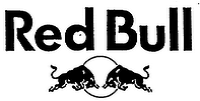


All of the registrations relied upon by Red Bull covered sports drinks, soft drinks and related beverages. Interestingly, Rull Bull also has and plead its registration of the mark GIVES YOU WINGS, as well as its common law rights in the marks WINGS, WIIINGS and GIVES YOU WIIINGS. Analyzing the case, the TTAB noted that Red Bull did not argue that it had a “family of marks” or a “conjoint use theory” and thus analyzed the mark ![]() and therefore said that the determination of whether consumers would be confused would effectively rest and fall on this mark.
and therefore said that the determination of whether consumers would be confused would effectively rest and fall on this mark.
The TTAB first discussed the similarity of goods and their trade channels. The TTAB presumed the goods recited in Red Bull’s registration and the PINKCOW application moved in all channels of trade normal for such goods and are purchased by all classes of purchasers. While “energy drinks” were excluded from the application at bar, the TTAB noted that the regisrations and the opposed application both effectively covered soft drinks as energy drinks and soft drinks are one and the same, and as such move in the same channels of trade.
The TTAB then considered conditions of purchase and noted that because the items were impulse and relatively low priced purchases, the factor favored confusion. Next the TTAB focused on the “fame” of the RED BULL mark and its strength, looking at the number and nature of similar marks in use for similar goods. They looked at inherent/conceptual strength of the mark, as well as commercial strength, and based on the evidence, deemed the mark famous. The TTAB noted at least seven registrations for beverage products that contained the word BULL but indicated that same was not sufficient to limit the scope of protection due to a famous mark.
On the most probative issue, the similarity of marks, the TTAB asked whether the commercial impression of the parties’ respective marks would cause consumers to assume a connection between the parties. The following discussion contains the heart of the reason for the ruling:
As to connotation, pink is a lighter shade of red. “Bull” is defined as “a male bovine; especially: an adult uncastrated male domestic bovine,’ while definitions of “cow” include both “the mature female of cattle’ and “a domestic bovine animal regardless of sex or age.” Thus, “bull” and “cow” can mean male and female bovines, respectively. But in common vernacular, a ”bull” also can be a “cow,” that is, “a domestic bovine animal regardless of sex or age.” Per the record, therefore, consumers can interpret BULL and COW either as designating bovines of the opposite sex or as synonyms.
Opposer’s mark ![]() adds two realistic charging bull images to the wording discussed above. Applicant’s mark
adds two realistic charging bull images to the wording discussed above. Applicant’s mark![]() incorporates a single whimsical flying pink cow with wings and a long tail. Although there are differences between these marks, the fact that both incorporate bovine imagery enhances their similarity. Indeed, consumers are likely to construe the Applicant’s mark as a feminized version of Opposer’s marks.
incorporates a single whimsical flying pink cow with wings and a long tail. Although there are differences between these marks, the fact that both incorporate bovine imagery enhances their similarity. Indeed, consumers are likely to construe the Applicant’s mark as a feminized version of Opposer’s marks.
It seems that that is the reason the mark ![]() was deemed so much closer than the third-party registrations of record which included the word BULL, including the following:
was deemed so much closer than the third-party registrations of record which included the word BULL, including the following:
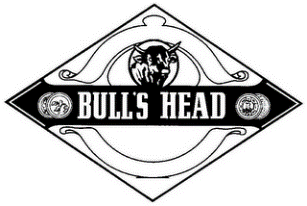
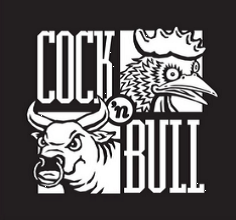 BULLDOGADE
BULLDOGADE
PIT BULL ENERGY DRINK

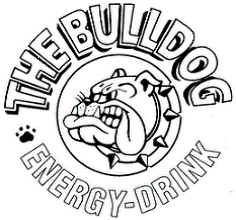
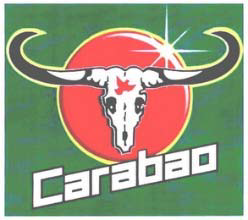
SUPERBULL
Finally, the TTAB explained that foreign coexistence of the marks for 5 years without any evidence of confusion had no bearing on the decision, as foreign use was not relevant.
Nike, Inc. v. Cheryl Bauman-Buffone
The applicant Cheryl Bauman-Buffone sought to register JUSTSAYIT in the special form shown below for books and e-books in the field of promoting healthy lifestyles:
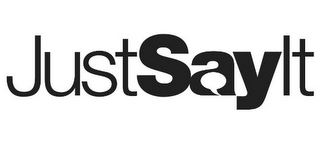
Nike opposed the application based on its prior rights in the mark JUST DO IT as a marketing and promotional slogan, and for various goods including clothing, footwear and bags. It asserted both a claim of likelihood of confusion and a claim of dilution by blurring.
Considering Nike’s claims, the TTAB then focused on the two most important factors– strength of mark and similarity of goods. While the applicant conceded that Nike’s JUST DO IT mark was famous, the TTAB independently accessed the fame of the slogan based on advertising awards, consumer survey recognition, and even based on JUST DO IT ads featuring celebrities like Michael Jordon, Tiger Woods, Serena Williams, to name a few. The TTAB also considered Nike’s 29 million Facebook followers and 76 million Instagram followers. It noted that $5 billion dollars have been spent in the span of nine years to advertise the slogan in the U.S.. It also reviewed excerpts from printed publications that reflected on the slogan as “a rare gem” that “transcended advertising to enter popular culture and language.” It found that the slogan was “famous” for both the confusion test and the heavier dilution test and thus entitled to the highest level of protection against confusion.
On the similarity of marks, the TTAB observed that both marks consisted of 3 short words, both began with JUST and ended with IT. They both take the form of a command and are not specific as to what “it” means. They both imply simply acting — by doing or saying — and not thinking or hesitating too much. The TTAB then described the differences and similarities between the words “DO” and “SAY,” going so far as to use other phrases such as “actions speak louder than words” to suggest that there is a relationship. The TTAB was not impacted by the stylization of the words JUST SAY IT, nor by the “minor” design element, since Nike’s registration was in standard characters and typed form and thus covered all displays of its mark.
With respect to similarity of the goods, the TTAB noted that the mark’s fame requires a finding that products not closely related may nonetheless be confused as to source by a consumer because of the fame of the mark. The TTAB explained that the test requires not just the evaluation of the products themselves, but also of the manner in which they are marketed. In the case at bar, the TTAB held the goods were related in that the books pertained to healthy physical activities, and Nike’s goods also pertained to healthy lifestyles and physical activities such as playing sports and working out. Interestingly, the TTAB also pointed out that while Nike only had registered goods, they provided information on healthy lifestyles under the mark in their mobile apps and through their advertising, and thus were providing information by the modern equivalent of books. The TTAB recognized that Nike’s JUST DO IT ads “started conversations about tough subjects” and so transcended the use strictly on goods. Nike’s JUST DO IT ads showcased athletics-turned-change-makers, such as Colin Kaepernick, Odell Beckham Jr., LeBron James, among others, who were “known for pushing barriers and shaping conversations on race, gender and ability.” As such, it was a no brainer to conclude that applicant’s books are an extension of Nike’s JUST DO IT advertising campaigns and that there was a likelihood of confusion. The analysis of the dilution claim was quite thorough and given the level of fame noted, went in favor of Nike as well.
Bottom line: If you prove that you have a famous mark, the TTAB will go to great lengths to halt encroachments.